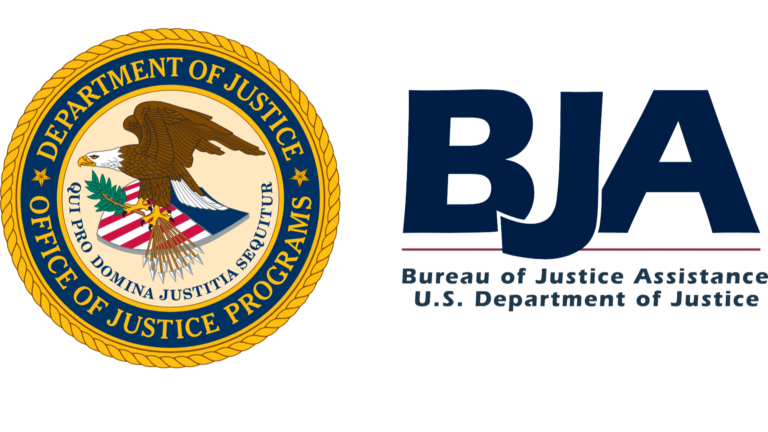Assembly Bill 236
In addition to assessing the impact of COVID-19 on the state’s justice system generally and prison population specifically, state leaders requested an evaluation of how the pandemic affected the implementation of AB 236 (2019). The legislation went into effect in June 2020, during the midst of the pandemic when all state and local operations were altered. This section examines the goals of the bill and discusses the ways in which they have been impacted by the pandemic. Many provisions, particularly sentencing or eligibility changes, went into effect unencumbered by COVID-19. However, the pandemic’s drain of resources and staff did impact a few key areas of implementation, notably community supervision and reentry practices.
Strengthening responses to behavioral health needs
One of the key areas AB 236 addressed was expanding alternatives to incarceration for those with behavioral health needs. One way it accomplished this was by expanding eligibility criteria for participation in Specialty Court programs to include those charged with a crime that involved the use of force. NDOC admissions data reflects this change, with an eight percentage point increase in the share of admissions to Specialty Courts of individuals charged with person offenses (largely involving use of force) during the pandemic. While the percentage of admissions to Specialty Courts for all other felony offense types decreased, the share of admissions for those charged with person offenses jumped from 12 percent of felony admissions to 20 percent during the pandemic.
In contrast, another mechanism to expand access to alternatives that was not utilized during the pandemic was deferred sentences for Specialty Court programs. The bill created this sentencing option to allow judges to dismiss cases once individuals successfully completed the program. However, Specialty Court data show that the use of deferred judgements dropped by over 50 percent during the pandemic compared to before. Stakeholders suggested this decline may be driven by a general reduction in court proceedings, particularly for nonviolent offenses, and a reluctance by judges to issue a sentence that would require program completion when such programs were unavailable due to COVID-19 closures.
In addition to expanding the alternatives available, AB 236 modified several policies relating to the interactions between law enforcement and those with a behavioral health needs. This included creating a grant program to incentivize partnerships between law enforcement and behavioral health specialists and a requirement that law enforcement agencies adopt crisis intervention protocols. By January 2021 the Peace Officer Standards and Training (POST) Director had secured funding through Justice Reinvestment Initiative sub-award grants and selected a contractor to develop training protocols for standardized crisis intervention across the state. This contractor is also working on establishing the infrastructure for the grant program and looking for opportunities to fund it.
Focusing resources on individuals convicted of violent offenses
One of the key findings of the Advisory Committee on the Administration of Justice (ACAJ) in 2018 was that two out of three individuals coming into prison were convicted of a nonviolent offense. To reduce the number of people coming in on drug and property offenses, which were among the most frequent offenses at admission, AB 236 made changes including narrowing the burglary statute, raising the felony theft statute, and creating a clear distinction between users, sellers, and traffickers in the drug statute.
Interviews with judges and attorneys, as well as data from CCDC and NDOC, suggest that these changes went into effect without disruption from the pandemic. Looking at NDOC admissions, the data show the share of admissions for nonviolent offenses fell from 66 percent in 2017 to a monthly average of 61 percent from March to December 2020. Further, pretrial data from CCDC show that bookings of the broader drug, burglary, and theft offenses that were utilized in the pre-pandemic period shifted during the pandemic to the new offense categories created under AB 236 during. The data show the logging of such offenses at bookings, illustrating a change in practice to match the new policy. The data CJI received do not provide the specific number of bookings for these new offenses to conduct any analysis on change in volume.
Improving the efficiency and effectiveness of community supervision
Apart from addressing admissions, AB 236 also introduced policies designed to reduce the number of individuals cycling through the system. The ACAJ found that in 2017, returns from community supervision largely drove the growth in admissions to Nevada prison. In effort to reduce recidivism, AB 236 applied evidence-based practices to the state’s community supervision practices. This included requiring graduated sanctions, a risk and needs assessment to develop case planning, and revocation caps for technical violations in the form of limited custodial stays in increments of 30, 90, and 180 days for the first, second, and third violation, respectively. It is important to note that there were no data available from NPP for this report, so the information about implementation of these policies was derived from interviews with and a survey of NPP staff and supported by data from other agencies.
Overall, data from NDOC show a decrease in returns to prison for technical violations among individuals on both parole and probation during the pandemic. Comparing admissions for violations prior to the pandemic to during it, the data show a decrease for technical violations of those on parole by 26 percent and those on probation by 30 percent. Interviews suggest a variety of reasons for the decline. Some suggest that was due to the informal NPP policy for officers to only prioritize violations that were a safety threat. Others noted that the reduction could be due to the decreased amount of contact officers had with individuals they supervised during the pandemic, which officers felt limited their ability to ascertain whether individuals were violating terms of their supervision. Further, several interviews with judges revealed an inconsistent approach to the use of technical revocation caps, with some jurisdictions acknowledging the change and others citing an approach that conflicted with the requirements of the legislation.
Looking specifically at the Parole Board’s use of the revocation cap policy, the data show the Board is using the 30-, 90-, and 180-day revocation periods to respond to technical violations. By August 2021, the 30-day Revoke & Reinstate category had been utilized more than other categories, growing from an initial 170 cases in the first half of FY2021 (July through December 2020) to 222 cases in the second half (January through June 2021). Of those 30-day Revoke & Reinstate cases, just over one-third involved individuals on parole for property-related offenses, while another 30 percent involved individuals on parole for violent offenses. As of the last date in the available data, both the 90-day and 180-day Revoke & Reinstate categories involved only a handful of cases but still mirrored the offense category patterns most often related to parole: property and violent offenses.
Despite the decrease in technical violations, NDOC data demonstrate an increase in admissions for individuals on probation with new criminal offenses. During COVID-19, there were approximately 4 more admissions per month, on average, of individuals on probation picking up a new B or C level felony property offense. Interviewees noted that this could be a byproduct of remote supervision, as it limited officers’ ability to intervene when people on supervision were struggling. The increase in individuals on probation having new offenses was also reflected in the survey results, where officers indicated one of the leading causes of revocation was an individual being charged with a new offense. Survey respondents also noted a major driver of revocation was an increase in the number of individuals absconding. AB 236 defined what conduct constituted a technical violation and explicitly did not include absconding. Data from Specialty Courts support this trend, showing that the percentage of program failures resulting from absconding jumped from 16 percent prior to the pandemic to 23 percent during it.
Minimizing barriers to successful reentry
Lastly, AB 236 also made notable changes to the reentry process. This included requiring NPP to develop reentry plans in coordination with NDOC six months prior to release and the requirement to provide individuals with certain documents and identification prior to their release from custody. Interviews indicate that short staffing as well as staff having barriers to accessing individuals in custody has significantly impacted the implementation of these changes. Staff noted the challenges of working with individuals in custody while facilities were regularly on lockdown and cell blocks were under quarantine. They discussed how a lack of in-person programming further exacerbated this process by making individuals in custody unable to complete necessary components of their reentry plans. NDOC and NPP have both recognized these new barriers as a result of the pandemic and have pledged to collaborate and develop workable solutions.

This project was supported by Grant No. 2015-ZB-BX-K002 awarded by the Bureau of Justice Assistance. The Bureau of Justice Assistance is a component of the Department of Justice’s Office of Justice Programs, which also includes the Bureau of Justice Statistics, the National Institute of Justice, the Office of Juvenile Justice and Delinquency Prevention, the Office for Victims of Crime, and the SMART Office. Points of view or opinions in this document are those of the author and do not necessarily represent the official position or policies of the U.S. Department of Justice.

The Crime and Justice Institute (CJI), a division of Community Resources for Justice, works to improve public safety and the delivery of justice by providing nonpartisan technical assistance, research, and other services to improve outcomes across the spectrum of the adult and juvenile justice systems, from policing and pretrial through reentry. CJI provides direct technical assistance, assessment, implementation, research, data analysis, training, facilitation, and more. We take pride in our ability to improve evidence-based practices in public safety agencies and gain organizational acceptance of those practices. We create realistic implementation plans, put them into practice, and evaluate their effectiveness to enhance the sustainability of policies, practices, and interventions. Find out more at www.crj.org/cji.
